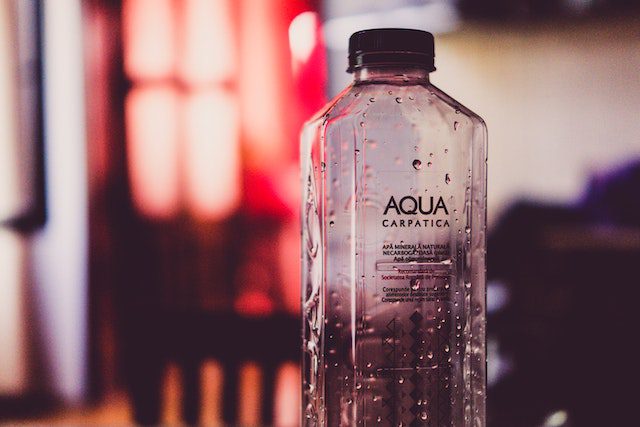Branding is the process of creating an identity for a product or service that will distinguish it in the marketplace. It involves establishing a unique set of characteristics that differentiate your company from competitors.
I’d like to start off by suggesting that you don’t try to do it all on your own. You will save so much time! Hire a marketing agency, a freelancer or go for an all-in-one solution like Tailor Brands that’s a one stop shop for all your business and branding needs. Tailor Brands have helped over 3 million customers. They setup your logo (best priced on internet!), website, domain, business mailbox, LLC, digital business card, along with personalized branding kit which includes business cards and branded merchandises. Their pricing starts from only $9.99 per month or $3.99 if you pay upfront for the entire year.
If you still decide to do it all on your own, this article will give you all the details you need to get started.
UPDATE: I recently also created a branding workbook template that you can use to implement the strategies shared in this blog post for your business. You can grab it here.
Brand Is Identity: Your Business’s Personality
A lot of businesses don’t spend a lot of time thinking about their logos or fonts they choose. However, your brand is just like your identity or DNA. Just like how there’s no other you, there’s no other brand like you – and that is only possible if you really take your time to build it to put your business in a unique position.
So, really take time to:
1. Figure out your target audience, if you haven’t already. – Who are you selling to?
2. Understand your customers and their needs. – What do they like? Dislike? Their hobbies? Their needs? Their values?
3. Evaluate Your Competition. – What are they doing? What sets them apart? How have they positioned themselves uniquely? What sets YOU apart?
This will determine your Brand’s Purpose
This is what makes a business successful! Knowing their story and their “why”!
What is your why? What is your brand’s purpose? Why does your brand even exist?
If you don’t already know your “why”, I’d suggest you go through other activities first. They will be helpful in determining your “why”
IMPORTANT: “Why” is not about the money that you’re trying to make. It’s above, way above that. It compromises of the values, differentiating factor, cause or a belief. It’s the difference that you bring to the world.
Your “why” is what will determine your long-term success…
Today’s customer will not just buy from anyone. Unless you are looking for one-time transactions, it takes a lot more to build a community and customer retention.
Here are some statistics on just millennials:
84% don’t trust traditional advertising [Source: Hubspot]
81% expect companies to support charitable causes [Source: Horizon Media]
Create a Brand Vision Statement
The best way to build brand awareness is to create a brand vision statement. A brand vision statement is usually written as a short sentence or two describing what your company stands for and what it wants to accomplish. It’s often used to develop marketing strategies and advertisements.
The first step in developing a brand vision statement is to define who you want to be as a business.
What does your company stand for?
What values do you want to convey to customers?
What does success look like?
How will you know if you’ve achieved it?
Once you’ve answered those questions, write them down.
Now, take some time to brainstorm ideas for how you plan to get where you want to go.
Think about who your customers are, what products or services you offer, and what makes you unique. Write down everything you come up with. When you’re done, review your notes and see which ones resonate most strongly with you.
Choose one idea to focus on. If you’re still unsure about what you want to accomplish, ask yourself why you started your business in the first place.
Was it because you wanted to change the world?
Or did you simply want to earn extra income?
Either way, now’s the time to figure out what really matters to you.
Simply put, a brand vision statement should include three things:
1) what you’re trying to accomplish;
2) how you plan to get there; and
3) what makes you different from other companies in your industry.
You might say something like, “Our goal is to help people live healthier lives.” That’s a pretty broad statement, but it gives you a starting point.
Next, think about how you plan to achieve that goal. Maybe you’ll offer free shipping, or maybe you’ll partner with local farmers.
Finally, you’ll need to explain what sets you apart from other businesses in your field. Perhaps you’ll offer organic options, or perhaps you’ll use recycled materials.
Whatever you choose, make sure it reflects your brand vision statement.
Optional Mission Statement
Once you’ve defined your brand vision statement, you’ll need to create a mission statement.
A mission statement is a brief explanation of why your company exists. For example, “We provide high quality products at affordable prices” would be a mission statement for a clothing store.
You Need To Create a Clear Message
A strong brand message should be clear and concise. If your message isn’t clear, people won’t understand what you’re trying to communicate.
When creating a brand message, think about who your audience is and what they want from you. For example, if you sell shoes online, you might create a brand message that focuses on style, quality, and affordability. You could also focus on customer service, shipping options, and returns policies. Whatever you choose to emphasize, keep it simple and direct.
A clear brand message helps people understand what you offer and why they should buy from you. If you’re selling shoes online, for instance, you might write something like, “We carry high-quality athletic footwear at affordable prices. We ship fast and provide free return labels.” Or, if you’re selling organic dog treats, you might say, “Our products are 100 percent natural and contain no artificial ingredients. Our packaging is recyclable and our shipping rates are low.”
The key to creating a clear brand message is to be specific. You want to tell people exactly what you sell and why they should buy it. For example, if you’ve got a business selling custom T-shirts, you could write something like, ‘Customized apparel for every occasion. Whether you’re looking for a special gift for a friend or a unique corporate logo, we can help.’ That’s a lot more helpful than simply writing, ‘T-shirt printing company.’
Build Branding Elements
Now that you have your research and vision/mission statements, you will have a more clear idea of what you need to incorporate in your branding.
You can then start building elements below:
Logo
Logo is what your customers will see most often. Role of logo is huge and it’s really like a symbol that represents your brand. Make sure that it showcases your business’s personality, emotions, message and the nature of your product.
Remember to also evaluate your competitor’s logo to avoid too many similarities.
Another important factor are the colors and/or fonts that go into the logo.
Colors
Many businesses don’t understand the importance of colors when it comes to branding. Research has shown that cultural differences, personal experiences, upbringings, and various other factors have a huge influence on the effect that colors tend to have on us. Companies like Google, eBay, Coca Cola, and bigger brands have chosen their colors very carefully.
Take a look at the Color Emotion Guide below and you will see how different colors are associated with different emotions. Based on your research and the message you are trying to get across, think about which color would best meet the needs and will be most suitable for your customers.
Which emotion(s) do you want people to feel or think of when they think about your brand or when they see your website or logo?

Source: The Logo Company
Additionally, there seems to be differences between men’s and women’s colors. There are certain colors such as Blue which is preferred by both men and women while brown which is the most disliked color by both.
You might want to consider this based on your target audience as well, is it a mix of men and women, is it mostly men, mostly women, children, teenagers?
Lastly, even color variations have a huge impact. A lighter red versus a darker red are both perceived differently.
So, really take time to build your own branding color palette to choose the colors that will best suit your business.
Typography
Typography is more than just what goes into your logo. Your business cards, flyers, marketing, banner – all need to be created using certain fonts and style. Sometimes small businesses have designers create custom font for them to keep it unique.
Icons
Icons can be mascots or any visual elements that your brand may be known by. Again, make sure that these reflect your brand’s personality.
You Need A Style Guide
Now that you have everything, you’ll need a style guide for your branding. A style guide is basically a documenting that includes all the instructions on how to create or use the graphics for your business.
Always refer to this guide when marketing and you can also use this to hire other’s to create promotional materials for your business.
Branding To Build Trust With Consumers
If you want to build trust with consumers, you need to be consistent in everything you say and do. That includes your logo, website design and social media profiles. You need to make sure that your brand message is consistent across every touchpoint.
When people see your logo, they know what kind of company you are. The same goes for your website. And if they see your social media profile, they know who you are and what you stand for.
In fact, according to research from the University of California at Berkeley, people who see a logo repeatedly tend to form stronger associations with it. The same goes for your website. If you use the same color scheme and fonts on every page, then visitors will feel more comfortable navigating around your site.
Get customers to trust your brand by building a reputation for honesty and integrity.
How can you build a reputation?
I’ve been thinking about this question for some time now. I think that the answer is simple: by building a good reputation in your niche, and then using that to get and serve more customers.
But how do you build a reputation? How do you make sure people know who you are and what you do? And how do you use that reputation to get more customers?
You need to be honest with yourself, your customers, your employees, and the world at large. You need to do what is right, not just what is easy or convenient. You need to make decisions based on what’s best for your business, not what’s best in the moment.
If you don’t have a plan, then you are flying by the seat of your pants. And if you don’t know where you want to go, then you can’t get there.
Brand Awareness By Engaging Customers
If you’re looking to build brand awareness, there’s no better place to start than with your customers. By creating a strong relationship with them, you can help them understand what makes your business unique and why they should choose you over your competitors.
The best way to engage customers is to listen to them. When you ask questions, you’ll learn what they want from your company and what they expect from you. You’ll be able to tailor your services to meet their needs. And if you’re lucky enough to find people who love your product or service, you’ll know exactly where to focus your efforts to keep them coming back for more.
To get the most out of customer engagement, you must first understand what motivates your audience.
What makes them tick?
Why do they buy your products or use your services?
Once you’ve identified those key drivers, you can then design a strategy to address each one.
For example, if your target market is parents, you might create a series of blog posts designed to help them better manage their children’s schedules. Or if your audience is business owners, you could offer free workshops on topics such as social media marketing.
Remember, the worst way to engage with customers is to bombard them with emails or text messages. Instead, you should try to connect with them on a personal level. Ask them questions, share stories about yourself, and let them know that you care about them.
In addition to listening to your customers, you should also pay attention to what they say about you online. Social media sites like Facebook and Twitter allow you to monitor conversations about your business. You can see which keywords people are using to search for your products or services, and you can respond to comments and questions directly.
If you want to build brand awareness, you must also be active on social media. The best way to engage customers is to answer their questions and provide them with helpful information. When you interact with your customers, you show them that you care about their needs. And if you’re able to address their concerns, you’ve built trust between you and your customer base.
As a business owner, you must always remember that your customers are your lifeblood. Without them, you wouldn’t exist. That’s why it’s essential to treat them well. After all, they’re the reason you’re in business in the first place.
Measure Results
Once you’ve identified your goals, you need to measure how well you’re doing.
If you want to build brand recognition, you need to know what’s already working and what isn’t, according to marketing expert Brian Halligan. “You need to know what’s resonating with your audience,” he explains. “That means measuring results.”
This will give you insight into whether your efforts are paying off. You can use Google Analytics to track visitors to your website and see where they come from. You can also use tools like Facebook Insights to see how people interact with your posts.
If you want to build brand awareness, you’ll need to know what’s working and what isn’t. For example, if you’re trying to get more followers on Instagram, you should be able to tell which posts are getting the most engagement. You can then adjust your strategy accordingly.
Again, tools like Google Analytics allow you to see exactly where people are coming from, what content is performing best, how many people are engaging with your social media posts, what types of devices people are using to access your site, and how often they visit.





